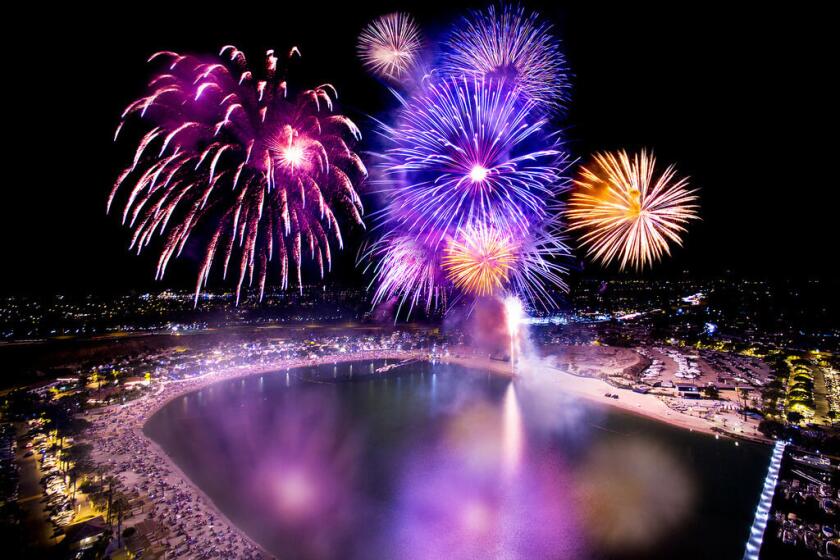Mesa Musings: The watchful eyes of George and Abe
- Share via
Have you ever been duped by an optical illusion?
Of course you have. So have I.
An optical illusion is described as a visually perceived image that differs from objective reality. Information that’s gathered by the eye is processed by the brain in such a way that it gives a perception that doesn’t correspond with a physical measurement of the stimulus source.
In 1953-54, I was enrolled in Mrs. Coxen’s fourth-grade class at Lindberg School in Costa Mesa. The class met in a World War II bungalow, probably a castoff of the Santa Ana Army Air Base.
In the front of the classroom was a large blackboard. Above the board, on either end, hung a sizeable portrait. The portrait on the left was that of President George Washington. President Abraham Lincoln was on the right.
At the beginning of the year I sat about three quarters of the way back in the row on the extreme right side of the room, facing the chalkboard.
Sometime early in the fall semester, I noticed that the two presidents seemed to be looking directly at me. They weren’t looking at Johnny two rows to my left, or Debbie three seats ahead of me. They were looking at me!
I don’t mind telling you, I was creeped out. George and Abe seemed to be scrutinizing my every move. I had zero privacy. They knew when I was working and when I was loafing.
Early the following spring, Mrs. Coxen decided to shake things up and rearranged our seating order. I was moved across the room to the row on the extreme left side of the room.
It took me only a few moments to notice that George and Abe were still looking at me — seated, now, on the opposite side of the room. My former creeped-out feeling soon grew into borderline panic! What was it about me that drew the rapt attention — nay, fixation! — of two of America’s greatest presidents? I felt wretchedly tormented!
But I took my circumstance like a man. I accepted George and Abe’s unsettling curiosity and kept it to myself. I said nothing to Mrs. Coxen, to my fellow students or my parents.
I completed my secondary education some years later and became a college student. I finished graduate school without ever having enrolled in an art course
But the fourth-grade “Mystery of the Two Presidents Scenario” never completely left my consciousness.
Fast-forward 50 years.
My wife, Hedy, and I were touring the Gallery of Tapestries at the Vatican and came across a tapestry by the workshop of Pieter van Aelst: the huge and stunning 500-year-old “Resurrection of Christ,” which is based on a cartoon by Raphael. Jesus is depicted as stepping out of the tomb and standing upon its gravestone. Our tour guide advised us to walk the length of the massive tapestry and notice that Jesus’ eyes seem to follow you as you walked — and his body turns to its left.
It’s an amazing optical illusion.
I walked the tapestry several times to fully appreciate its dramatic impact.
Then, a light bulb began to glow dimly in my brain. Maybe this artistic marvel is related to the George and Abe thingy that transpired in Mrs. Coxen’s classroom.
Admittedly, who better to follow you with their eyes than George and Abe … and Jesus! But occurrences such as these are not accidents. They’re optical illusions, deliberately planted by their artists.
How’s it done? If a subject in a painting (or tapestry) is looking straight ahead, our brains will perceive that he or she is staring directly at us, no matter the angle from which we view the painting. On a flat canvas, shading and light are fixed, so the image looks the same from every viewing angle.
I squandered quality doodling opportunities in my fourth-grade classroom because I was convinced Washington and Lincoln were keeping tabs on me. I’m certain it was a brilliant ploy hatched in the uppermost chambers of the Newport-Mesa school district office.
And it worked!
Take it from me — George and Abe were relentless.
JIM CARNETT lives in Costa Mesa. His column runs Wednesdays.



